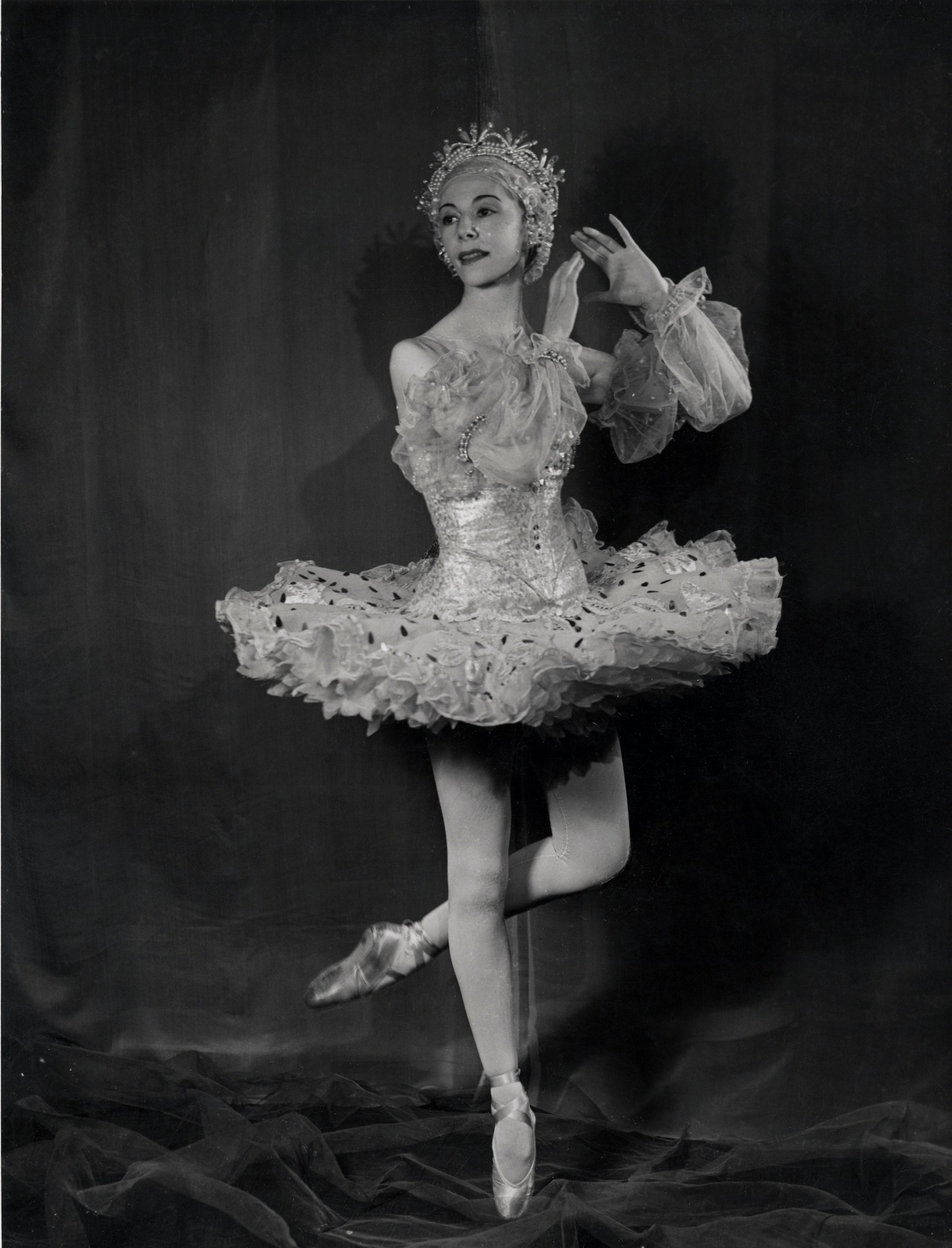people » Alicia Markova
Alicia Markova (1910-2004). British prima ballerina assoluta, teacher, director and choreographer
Alicia Markova was born Lilian Alicia Marks in Finsbury Park, London, in 1910. She was renowned for her technique and artistry, and also for her own personal strength of character. She studied with Serafina Astafieva, as well as Nicholas Legat and Enrico Cecchetti. In 1925, when she was just 14 years of age, Markova was taken into Serge Diaghilev’s Ballets Russes as ‘my little English girl’. She remained with Diaghilev until his death in 1929, having danced many important roles, including creating the lead in George Balanchine’s Le Rossignol. Markova then danced in London for The Camargo Society and for Ballet Rambert from its inception in 1930. For The Camargo Society, she created the Polka in Façade, and worked extensively with Frederick Ashton at Ballet Rambert, where she was ballerina.
From 1931 until 1935 Markova danced as ballerina with the Vic-Wells Ballet, creating principal roles in Ashton’s Les Rendezvous and Ninette de Valois’ The Rake’s Progress as well as appearing as Giselle and Odette-Odile in the complete version of Swan Lake, the first British dancer to do so. Her work for the Vic-Wells Ballet, in particular, was crucial in establishing ballet in Britain, and her interpretation of Giselle became legendary.
From 1935 to 1938 Markova was the ballerina of the Markova-Dolin Ballet, which she established with Anton Dolin, her frequent balletic partner. Then from 1938 to 1941 Markova appeared with the Ballet Russe de Monte Carlo, creating roles for Léonide Massine and touring triumphantly in Europe and the United States of America. She joined Ballet Theatre (later American Ballet Theatre) in 1941 until 1946, also touring worldwide with Dolin. She and Dolin were guest artists of the Sadler’s Wells Ballet in 1948, when Markova danced her first full-length Princess Aurora in The Sleeping Beauty. She then re-formed the Markova-Dolin Company in 1949, which eventually became Festival Ballet (and later London Festival Ballet, and then English National Ballet). She left Festival Ballet in 1952 but continued to tour and perform as a guest artist until her retirement as a dancer in 1963.
After her retirement, Markova was director of the Metropolitan Opera Ballet in New York, and for many years taught and coached at the highest level, passing on the knowledge of the many roles with which she had been associated. From 1969 to 1974 she was professor of Ballet at the University of Cincinnati, and, at various times, president of English National Ballet, a governor of The Royal Ballet and vice-president of the Royal Academy of Dance. With Margot Fonteyn she was one of only two British ballerinas recognised as prima ballerina assoluta. Alicia Markova was appointed CBE in 1953 and DBE in 1963, and she died in Bath in 2004.

